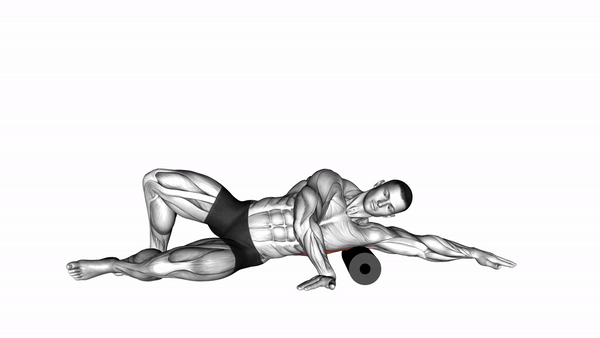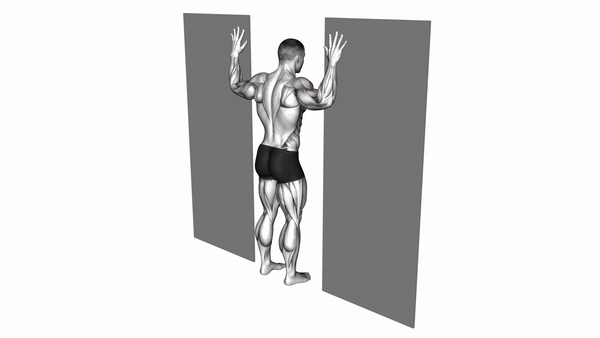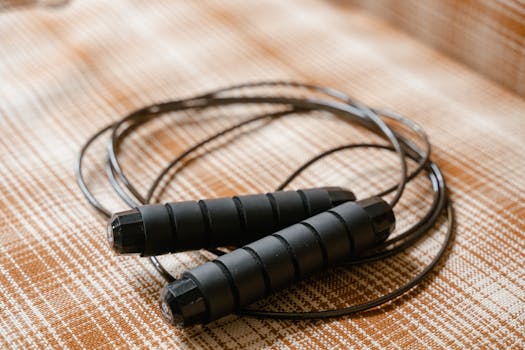How to Stretch Traps: Relieve Tension and Improve Mobility
Sep 27, 2024
trapezius muscles, commonly known as "traps," play a crucial role in shoulder and neck movement. These large, triangular muscles extend from the base of the skull to the middle of the back and across the shoulders. Due to our modern lifestyle, which often involves long hours at desks or looking down at smartphones, many people experience tightness and tension in their traps. Learning how to stretch traps effectively can significantly improve your comfort, posture, and overall mobility.
In this comprehensive guide, we'll explore various techniques to stretch and loosen your trap muscles, addressing common questions and providing practical tips for incorporating these stretches into your daily routine.
Understanding the Trapezius Muscles
Before diving into specific stretches, it's essential to understand the anatomy and function of the trapezius muscles:
Upper traps: Extend from the base of the skull to the shoulders
Middle traps: Run across the upper back
Lower traps: Extend down the middle of the back
The trapezius muscles are responsible for:
Moving the shoulder blades
Supporting the arms
Rotating and extending the neck
Maintaining proper posture
When these muscles become tight or tense, it can lead to discomfort, limited range of motion, and even headaches.
How to Loosen Up Tight Traps
Loosening tight trap muscles involves a combination of stretching, self-massage, and lifestyle adjustments. Here are some effective techniques:
1. Neck Tilts
This simple stretch targets the upper traps:
Sit or stand with good posture
Slowly tilt your head to the right, bringing your ear towards your shoulder
Hold for 15-30 seconds
Repeat on the left side
Perform 3-5 repetitions on each side
2. Shoulder Rolls
Shoulder rolls can help release tension in the upper and middle traps:
Sit or stand with your arms relaxed at your sides
Slowly roll your shoulders forward in a circular motion
Complete 5-10 forward rolls
Reverse the direction and complete 5-10 backward rolls
3. Upper Trapezius Stretch
This stretch specifically targets the upper traps:
Sit or stand with good posture
Place your right hand on top of your head
Gently pull your head towards your right shoulder
Hold for 15-30 seconds
Repeat on the left side
Perform 3-5 repetitions on each side
4. Doorway Stretch
The doorway stretch can help open up the chest and relieve tension in the traps:
Stand in a doorway with your arms raised and bent at 90-degree angles
Place your hands on the doorframe
Step forward with one foot, leaning into the stretch
Hold for 15-30 seconds
Repeat 3-5 times
How to Release a Trap Knot
Trap knots, or trigger points, can be particularly uncomfortable. Here are some techniques to release them:
1. Self-Massage
Use your fingers or a massage tool to apply pressure to the knot:
Locate the knot in your trap muscle
Apply firm pressure with your fingers or a massage tool
Hold for 30-60 seconds
Release and repeat 3-5 times
2. Tennis Ball Technique
A tennis ball can be an effective tool for releasing trap knots:
Place a tennis ball between your trap and a wall
Lean against the wall, applying pressure to the knot
Slowly move up and down or side to side
Continue for 1-2 minutes
3. Foam Rolling
Using a foam roller can help release tension in the traps:
Lie on your back with a foam roller under your upper back
Lift your hips off the ground
Slowly roll up and down your upper back
Spend extra time on any tight spots
Roll for 1-2 minutes

How to Stretch Your Traps Lying Down
Lying down can be a comfortable position for stretching your traps. Try these exercises:
1. Supine Neck Rotation
Lie on your back with your knees bent and feet flat on the floor
Slowly rotate your head to the right
Hold for 15-30 seconds
Rotate to the left and hold
Repeat 3-5 times on each side
2. Arm Slides
Lie on your back with your arms extended overhead
Keeping your arms straight, slide them down towards your hips
Hold for 5-10 seconds
Slide your arms back up overhead
Repeat 10-15 times
3. Pec Stretch
Lie on your back near the edge of a bed or mat
Let your right arm hang off the edge
Feel the stretch across your chest and into your trap
Hold for 15-30 seconds
Repeat on the left side

How to Relieve Trapezius Pain
In addition to stretching, there are several ways to relieve trapezius pain:
1. Heat Therapy
Apply a heating pad or warm compress to your traps for 15-20 minutes to increase blood flow and relax the muscles.
2. Cold Therapy
For acute pain or inflammation, apply an ice pack wrapped in a towel for 10-15 minutes.
3. Gentle Exercise
Engaging in low-impact activities like swimming or walking can help improve circulation and reduce pain.
4. Posture Correction
Pay attention to your posture throughout the day. Avoid slouching and try to keep your shoulders back and down.
5. Ergonomic Adjustments
Ensure your workstation is ergonomically set up to reduce strain on your neck and shoulders.
Deep Stretching for Traps
For a deeper stretch of your trap muscles, try these techniques:
1. Child's Pose with Arm Extension
Start in a child's pose position
Extend your right arm out to the side
Walk your fingers away from your body
Hold for 30-60 seconds
Repeat on the left side
2. Thread the Needle
Start on all fours
Thread your right arm under your left arm, bringing your right shoulder to the ground
Hold for 30-60 seconds
Repeat on the left side
3. Yoga Poses
Incorporate yoga poses like downward-facing dog or cat-cow stretches into your routine for a deeper stretch.
Why Are My Traps So Big?
Several factors can contribute to large trap muscles:
Genetics: Some people are predisposed to having larger traps.
Strength Training: Exercises like deadlifts and shoulder shrugs can build trap muscle.
Overcompensation: If other muscles are weak, your traps may overcompensate, leading to growth.
Poor Posture: Consistently poor posture can cause the traps to become overactive and enlarged.
If you're concerned about the size of your traps, focus on balanced strength training and improving your posture.
Incorporating Trap Stretches into Your Routine
To get the most benefit from these stretches, consider the following tips:
Consistency is Key: Aim to stretch your traps daily, especially if you have a desk job or frequently experience tension in this area.
Timing Matters: Stretch after a workout when your muscles are warm, or incorporate stretches into your cool-down routine.
Listen to Your Body: While some discomfort is normal during stretching, never push to the point of pain.
Breathe: Deep, steady breathing can help you relax into the stretches and increase their effectiveness.
Combine with Strength Training: Balance your stretching routine with exercises that strengthen the upper back and shoulders to improve overall posture and reduce trap tension.
Preventive Measures for Trap Tension
While stretching is crucial for relieving trap tension, prevention is equally important. Here are some strategies to help prevent trap tightness:
Practice Good Posture: Be mindful of your posture throughout the day. Keep your shoulders back and down, and your chin tucked slightly.
Take Regular Breaks: If you work at a desk, take short breaks every 30-60 minutes to move and stretch.
Stay Hydrated: Proper hydration helps maintain muscle elasticity and can prevent tightness.
Manage Stress: High stress levels can lead to muscle tension. Practice stress-reduction techniques like meditation or deep breathing exercises.
Use Proper Lifting Techniques: When lifting heavy objects, use your legs and keep the weight close to your body to avoid straining your traps.
Adjust Your Sleep Position: Use a supportive pillow and try to sleep in a position that keeps your neck and spine aligned.
When to Seek Professional Help
While stretching and self-care techniques can be highly effective, there are times when professional help may be necessary. Consider consulting a healthcare provider if:
Pain persists or worsens despite regular stretching
You experience numbness or tingling in your arms or hands
Trap tension is accompanied by frequent headaches
You have difficulty turning your head or lifting your arms
The pain interferes with your daily activities or sleep
A physical therapist, chiropractor, or massage therapist may be able to provide additional treatments and targeted exercises to address persistent trap issues.
Conclusion
Learning how to stretch your traps effectively can significantly improve your comfort, mobility, and overall well-being. By incorporating these stretches and techniques into your daily routine, you can help prevent and alleviate tension in your trapezius muscles. Remember to be consistent, listen to your body, and combine stretching with other healthy habits like good posture and regular exercise.
If you're looking to create a comprehensive fitness plan that includes both stretching and strength training to support your trap health, consider exploring Tidalflow's personalized workout programs. With expert guidance and tailored exercises, you can work towards better posture, reduced tension, and improved overall fitness.
Remember, taking care of your trap muscles is an important part of maintaining your upper body health. By making trap stretches a regular part of your routine, you're investing in your long-term comfort and mobility.
You should not have to do it all on your own













